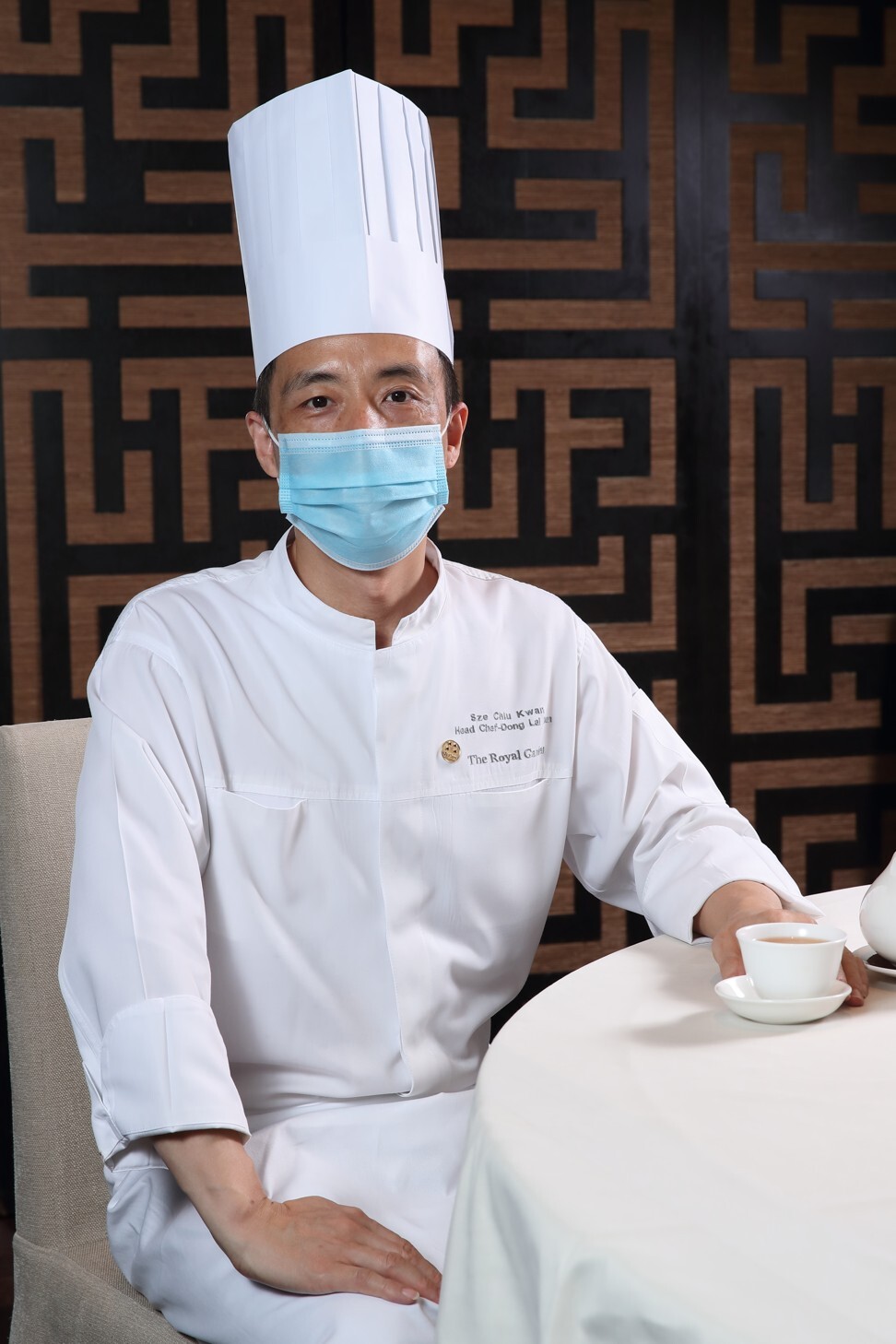
Winter in Hong Kong means hotpot and spicy food – chefs at Rosewood Hong Kong’s Chaat, The Royal Garden’s Dong Lai Shun, and Brut explain the spices that’ll warm you right up
Sze Chiu-kwan uses up to 15 spices in his Sichuan cuisine and Manav Tuli favours fenugreek leaves in his contemporary Indian butter chicken, while Gavin Chin’s fusion laksa doughnut is all about herbs
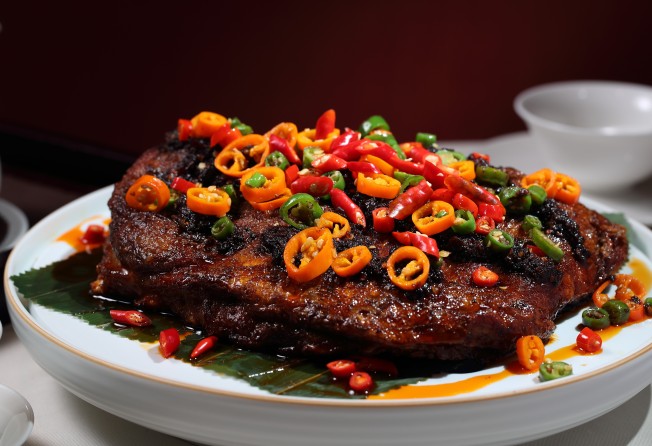
More than any other time of year, winter is when diners flock to eat something spicy to warm themselves up as the cold weather sets in. For Hongkongers, this often means eating hotpot and the spicier regional Chinese cuisines such as Sichuan dishes. So where should you sample a bit of spice this season?
Sichuan cuisine at Dong Lai Shun, The Royal Garden
Dong Lai Shun at The Royal Garden Hong Kong is known as a Beijing, Huaiyang and shuan yang rou (Mongolian hotpot) restaurant, but Sichuan cuisine has become so popular with Hong Kong diners that the restaurant’s executive chef, Sze Chiu-kwan, now has a selection of these dishes on his menu.

Sze has more than 30 spices in his kitchen, and he can use up to half of them in just one Sichuan dish. “There are 30 spices and chillies here, but I can use 10 to 15 in one dish. The amount of each spice I use depends on how spicy the dish is and if you want sour or other flavours to show through.”
Spices provide aromatic flavours to a dish, and one flavour should not overpower another. Sze says it is all about balance but if you want a stronger peppery or chilli flavour, then use dried spices. “There are two ways to use Sichuan pepper, fresh or dry. The fresh ones are not too strong whereas the dried ones give you more of a numbing or mala taste,” says Sze, who has been a chef for 30 years. “Different Sichuan peppers have various levels of numbing and spiciness, too. The one that makes your mouth water is the dark Sichuan pepper. If the dish is too overpowering, chefs can add a touch of vinegar or sesame oil to lower the sharpness of the chilli or pepper.”
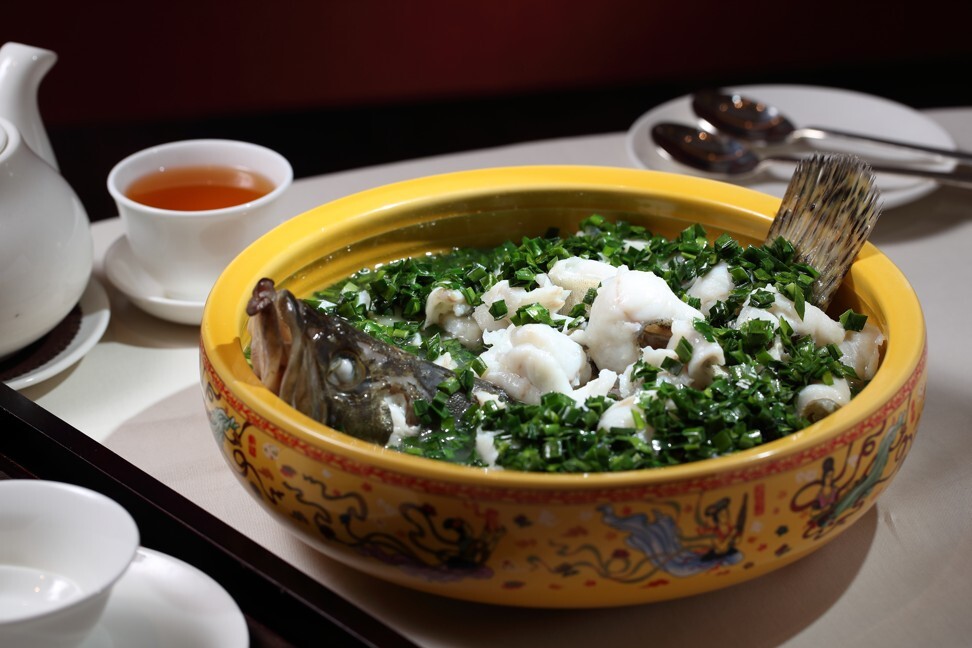
Sze says the level of spiciness also depends on the ingredients; for instance, fish will be milder and stronger meats require stronger spices.
If the amount of spices used for a good Sichuan dish seems too overwhelming, then just know that, along with chilli and Sichuan pepper, the average household in Sichuan commonly uses the “fragrant five” – fennel, pepper, aniseed, cinnamon and clove. Also frequently used in the cuisine are garlic, ginger and star anise. Sichuan dishes should be intensely fragrant with citrus-like flavours and a tingling, numbing aftertaste.
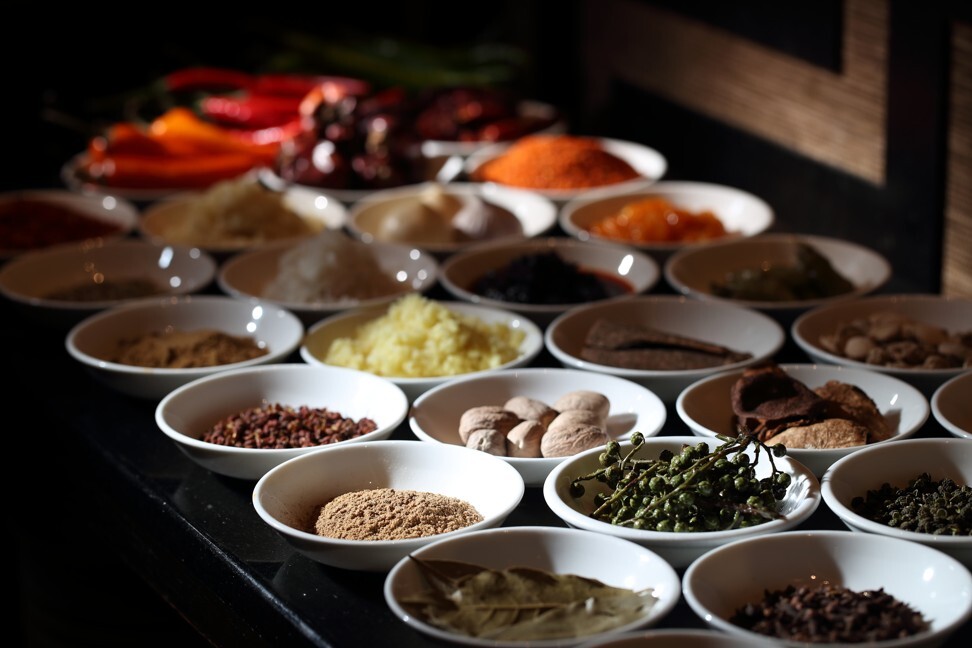
Indian cuisine at Chaat, Rosewood Hong Kong
Since Rosewood Hong Kong’s Indian restaurant Chaat opened earlier this year, it has been hard to book a seat – which is not surprising as its chef, Manav Tuli, offers arguably some of the best Indian fare in town, serving contemporary twists on street food from his homeland. He does not reinvent the wheel when it comes to using traditional spices and balancing flavours, but he has some favourite spices he likes to add to many of his dishes.
“I really love spices, especially dry fenugreek leaves,” says Tuli, who learned most of his kitchen skills from his grandmother. “I tend to put it in everything. It is slightly bitter but, then again, it is an integral part of a butter chicken recipe. You have the sourness of tomato, the creaminess of the cashew nuts and sweetness from the honey.

“So because of the caramelised tomatoes and honey, you need another element in there otherwise the dish is too sweet. It doesn’t make the dish bitter at all, it just rounds it off. So the small specks in the butter chicken is the fenugreek.”
Out of the hundreds of spices out there, most Indian families use around seven to 10 regularly, including mustard seeds, cumin seeds, ground coriander seeds, powdered turmeric, red chilli powder, green cardamom pods, dried fenugreek leaves and seeds, cloves and black peppercorns. Tuli says the way you use each spice will affect the taste of the final dish.

“For example, the way you use chilli is very important. The way you cook red chilli, such as boiling, making it into a paste and then cooking it in oil, or chilli powder that you put in oil – each technique produces different tastes and textures,” says Tuli, who worked in London and Mauritius before arriving in Hong Kong. “Let’s say you are making a lamb curry, you take a whole green chilli and just put it in the curry or you can slice it or make a paste of it – all three will give a different flavour because of the way heat is released.”
Tuli says if you have made your curry too spicy, add a touch of sugar; likewise, if your dish is too sweet, add a touch of salt. “This is what my grandmother taught me,” he says.

International cuisine at Brut
Gavin Chin, executive chef at Brut, a small neighbourhood restaurant that is making waves in the foodie community, says his food breaks down barriers between countries. He likes to use spices from across the world in his Asian or Western-style dishes.
“I don’t like to look at kimchi as being Korean or sauerkraut as German. I say you have found something in your history that you need to preserve because you have a lack of refrigeration,” says Malaysia-born Chin, who grew up in Perth, Australia. “You had that vegetable and spices on hand and this weather condition, and you produce this pickled vegetable. We have things that we tend to like – umami goes across all nations. And that’s what we do here: we find the umami in every country and culture and we bring it together on a plate. And other profiles such as acidity, or finding different ways of bringing salt and sweetness without adding just plain sugar, we take from different countries for that as well.”
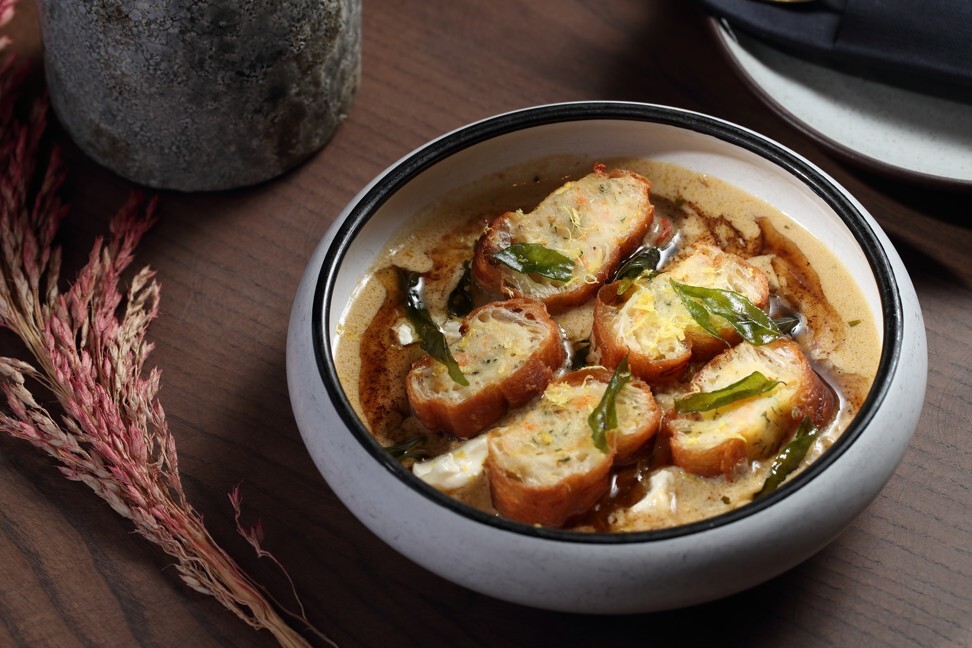
One of his most popular dishes is the laksa doughnut.
“The laksa doughnut is fun. Laksa paste, in terms of spices, is not dry spices but more herb spices. It includes galangal, lemongrass, laksa leaf, curry leaves, fresh and dried chillies, and shrimp paste, so the laksa paste consists of 22 ingredients, and then we blend that and let it sit for two or three days to ferment and bind together.
“As you know, next-day curries are the best curries. And that is the base of the dish. The ‘Chinese doughnut’ is filled with prawn, dill and lemon, put in an oven and baked until crispy; then we put it into the laksa broth. We finish with a bit of coffee oil on top, which gives depth to the dish,” he says.
“My ideology behind the spices themselves is more that I haven’t looked at them as a country-based recipe profile, it’s more that I love the flavour profiles of pickles, especially the UK-style dill pickles, and the pickles you have in Asia and Chinese culture. And the similarities in spices, your cinnamon, bay leaves, star anise, cloves and preserved lemons … Preserved lemons, for example, have a lot of peppercorns, cloves, bay leaves, juniper berries, salt and sugar, and that’s all brined together, and that’s the base of a lot of my spices in pickling.”